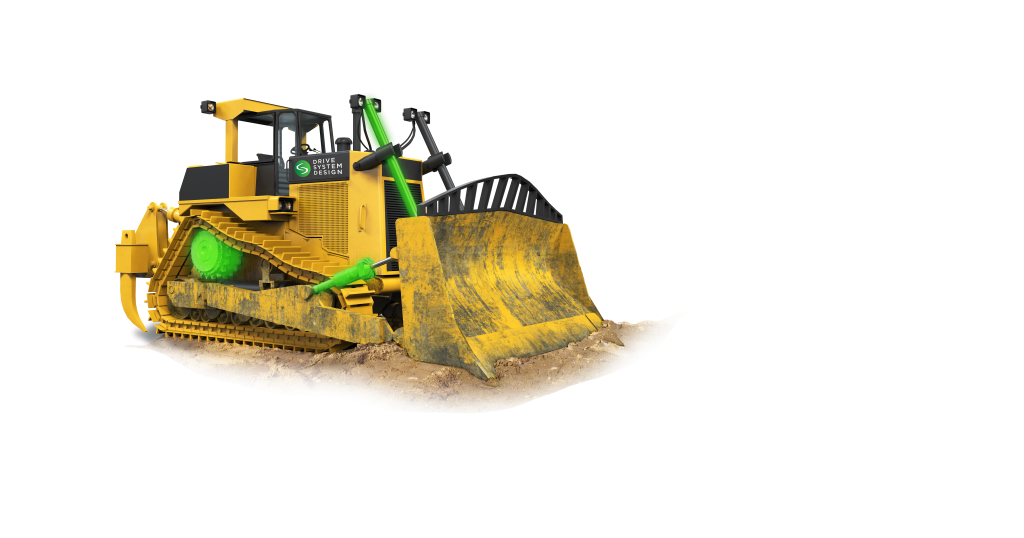Features - Business
The drive towards electrifying the off-highway sector

Troy Kraemer Principal Engineer, Business Development at Drive System Design (DSD) delves into the importance of electrification within the off-highway sector and how these unique vehicles can be adapted for electrification.

Troy Kraemer
With the off-highway vehicle market expected to grow at 14.1% CAGR from 2023 to 2030, the pressure is on to develop the most sustainable path forward for the industry. Original Equipment Manufacturers (OEMs) are now facing demands to boost sustainability and reduce the total cost of ownership. However, with a range of technology options and strategies to sift through, it’s vital to identify the optimal approach for each individual case.
While the sector contains a broad range of equipment types across various applications, construction in particular is seeing significant growth compared to other sectors such as large agriculture and mining. This is primarily due to commercial and infrastructure construction funded through government programs. Meanwhile, large agriculture and mining equipment production has slowed recently, driven by the economic downturn.
When looking at construction vehicles specifically, there are several systems required to perform their specific duties. Often lifting payloads or requiring significant energy to excavate, these vehicles need unique solutions to support electrification. So, what can be done?
How can we drive forward electrification in construction?
Sustainable propulsion is inevitable in off-highway, and electrification is one crucial element of that. Original Equipment Manufacturers (OEMs) need to understand how, where and when to deploy these systems across the diverse set of applications they may develop products for, to ensure the best ROI both now and in the future.
- Incremental electrification
Wholesale electrification of off-highway technology remains in the distant future. In the near term, we will continue to see a wide variety of incremental changes.
Companies will continue making the shift toward electrification and balancing new and existing technologies on the same platforms as the maturity of electrified technology develops in the coming years, and as operators begin to realise tangible operating savings and sustainability impact.
Whilst hybridisation and electrification are the long-term goals, decarbonisation of the internal combustion engine (ICE) through advanced technologies and clean fuels will continue to be a focus in the near term to meet power requirements.
Full electrification of construction equipment has already begun in the compact equipment area, with fully electric compactors, excavators, and material handling equipment already on the market Compact equipment often operates indoors, in suburban areas, and in confined areas where the zero emissions and NVH improvements of electrified systems are a clear benefit over traditional ICE-powered equipment.
- Unique solutions
The variation in duty cycles, mission profiles and use cases in off-highway applications, across construction, mining and agriculture, requires a varied approach with tailored technologies to achieve sustainability.
OEMs and Tier 1 suppliers are looking at how to deploy a range of new and existing products into the market to address the electrification and sustainability demand of off-highway, with an associated appetite for aggressive R&D strategies to deliver them.
While much of today’s electrification technology can be migrated into the off-highway segment, the application of this technology will present unique challenges due to the unique operating requirements in the sector. OEMs will look to identify and engage suppliers that have experience in the application of electrification technologies combined with strong systems engineering principles, to adopt and integrate these technologies.
- Energy recovery tactics
Maximising efficiency and energy usage through engine downsizing and energy recovery tactics is critical. The improved overall efficiency relies on a close understanding of design guidelines and duty cycles. So, the blend of conventional and new power sources delivers the improvements demanded by end-users.
A lot of these downsized applications are optimising fuel consumption and though not fully electric, are also reducing emissions through efficient hybrid systems. These systems offer interesting ways to also recover energy. For instance, as well as reclaiming propulsion energy during braking, equipment like excavators can recover energy while dumping or lowering loads.
- High-power density batteries
The hunt for more power-dense, safer batteries is on. These are critical to high up-time in harsh, high power draw applications in off-highway.
This push for higher power-density batteries will continue to support the electrification of the sector. In the near term, and considering the material challenges facing the industry, we will continue to see new suppliers enter the market, battery placement be modified, and new battery chemistries and processes be explored and adopted.
Alongside higher power density batteries, there is a slowly emerging ‘standard’ for off-highway electrification for higher voltage for higher power machines being balanced by the need for system robustness and safety.
This is primarily driven by the duty cycle of construction equipment, which will often have peak power requirements that are infrequent, but extremely high. Batteries must be designed to operate across a larger overall power range when compared to automotive where drive cycles are more consistent and better understood, and nominally have smaller average to peak power ranges. Organisations like the ‘Off-Highway Engine and Equipment Group’ are helping to support standardisation, which can help new market entrants and electrified technology adoption across the industry.
- Addressing the infrastructure challenge
Up-time is a huge driver for off-highway. Needing to charge a vehicle that runs more than half of the day, would often be commercially unviable for construction equipment fleet owners and contractors. Similarly, not having charging stations available in remote areas like rural fields, is a major obstacle to wholesale electrification. So, the industry is challenging itself to understand the system and its use cases to create effective solutions.
For example, construction vehicles like heavy excavators often do not move far in a day’s work. This presents the opportunity to be tethered to an energy source whilst operating. Additionally, in-field power banks are being developed for construction in remote areas where power grid availability is limited. Again, a detailed understanding of the real-world use cases allows the right solution to be deployed, so that benefits are delivered.
In conclusion, to drive forward electrification in the off-highway sector, OEMs must adopt a whole-system approach and remain agile in response to evolving regulations and demands. While electrification is a key component of sustainability, complementary technologies such as hydrogen, methane, and biofuels will also play a role. With rapid development in electrified systems, OEMs and Tier 1 suppliers are gearing up to deliver sustainable solutions for the future of off-highway vehicles.
An electric future for off-highway vehicles
To support the drive towards electrification within the off-highway sector, OEMs need to make sure they understand the greater electrified architecture needs and interactions – this is called a whole-system approach. They also can’t forget that the rapid pace of innovation and constantly changing regulations and demands means it’s vital to be swift and agile while creating scalable, modular, and flexible solutions.
While there is not one single technology that can deliver sustainability across off-highway subsets it’s important to consider the possibility of creating solutions with commonality and scalability in mind for OEMs.
Electrification isn’t the only road to sustainability for off-highway. Complementary technologies, like hydrogen, methane, and biofuels, will be an important part of the mix. Electrified systems will however play a key part in the future of off-highway, with their aggressive development meaning that most OEMs and Tier 1s are rapidly tooling up to deliver these systems to play their part in a sustainable future.
If you would like to read more stories like this, then please click here
Related Articles
More Features
- Building Britain: Ibstock ready to play their part in getting Britain building again
25 Jul 24
After Labour’s landslide win in July’s General Election, incumbent Chancellor of the Exchequer Rachel Reeves
- Housebuilding manifesto pledge scrutinised
20 Jun 24
We take a look at the response from around the sector.
- SMEs remain unprepared as cyber threats escalate
19 Apr 24
SMEs neglect cyber security, making them easy targets for a wide range of attacks, including






